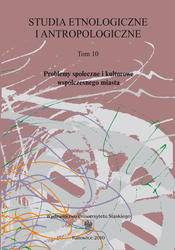

A mythologised image of Wielkie Księstwo Litewskie and its capital — Vilnius — says about a co existence of the representatives of the ethnic, religious and cultural groups. The situation changed radically in the 19th century when the leaders of the Lithuanian national movement treated the opposi¬tion to everything that is Polish as a condition of the success of the national idea, the development of the Lithuanian culture and identity. The benefits deriving from the historical relations with Poland were negated. The Poles were accused of the conscious devastation of the Lithuanian culture and compulsory Polonization of Lithuanians. The next source of conflicts was the inclusion of Vilnius and Wileńszczyzna to the II Republic of Poland (the so called Vilnius excursion 1919—1920). In spite of the flow of time, the echoes of the battles of Vilnius have been still alive. As it was in the past, the questions that arise are Whose city it is? To whom does it belong? The cause of the conflicts is not only historical “past”, political issues, mutual accusations and sense of harm, but also the contemporary transformations of the city. The battle has been fought on the so-called resources, being at the same time a perfect example of the rivalry of the space in a physical and symbolic sense. The very battle also has an economic dimension. It is also interpreted in the ethnic categories (the opposition: poor Poles — rich Lithuanians: Poles as the victims of the Lithuanian policy). The changes taking place in the space of the city lead to a greater restriction and appropriation of the sacred sphere by the commercialization, business, noise and entertainment. The conflicts fought in the Vilnius space (and on this space) prove how difficult it is to realize the ideals of multi culturality, an intercultural dialogue, non conflict life at the cultural borderline. They also show the power of money and its contribution to a division of the space of the city and managing this space. It is also visible on the basis of the problems with the returning the ground in Vilnius and Wileńszczyzna to its lawful owners (Poles in the predominating part of the places), the realization of the project “Great Vilnius” and appropriation of the Polish cultural heritage and its Lithuanisation.
Download files
Citation rules

Vol. 10 (2010)
Published:
 10.31261/SEIA
10.31261/SEIA